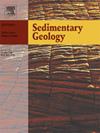白垩纪东亚化石蛋的热成熟度和颜色
IF 2.9
2区 地球科学
Q1 GEOLOGY
引用次数: 0
摘要
影响化石保存质量的因素有很多,温度是其中一个关键变量。化石在其埋藏史上所经历的最高温度影响其热成熟度和颜色。利用拉曼光谱分析了东亚地区白垩纪羊膜脊椎动物化石蛋的热成熟度。来自东亚内陆地区(蒙古和中国内陆)的鸡蛋没有明显的热印记,而来自东亚南部和东部地区(中国沿海、韩国和日本)的鸡蛋则表现出较高的热成熟度。虽然这一格局必然是由复杂因素(如埋藏深度、地层位置和局部地热现象)的综合作用造成的,但白垩纪古太平洋板块的回退以及随之而来的强烈火成岩活动和/或俯冲边界附近的高热流可能是主要的工作因素之一。本研究的方法可以推广到其他大陆的化石蛋,以阐明热成熟度与地质环境的关系,并将为化石蛋的分类提供更深入的认识。本文章由计算机程序翻译,如有差异,请以英文原文为准。
Thermal maturity and colors of Cretaceous East Asian fossil eggs
Several factors influence the quality of fossil preservation, with temperature being one of the key variables. The maximum temperature that fossils have experienced during their taphonomic history affects their thermal maturity and color. Cretaceous fossil eggs of amniote vertebrates from East Asia were analyzed using Raman spectroscopy to investigate their thermal maturity. Eggs from inland regions of East Asia (Mongolia and inland China) do not show a significant thermal imprint, while eggs from the southern and eastern regions of East Asia (coastal China, Korea, and Japan) show a high thermal maturity. Although this pattern must have been caused by the combined effect of complex factors (e.g., burial depth, stratigraphic position, and local geothermal phenomenon), the rollback of the Paleo-Pacific Plate during the Cretaceous and consequent vigorous igneous activity and/or high heat flow near the subduction boundary may have been one of the main working factors. The approach of this study can be extended to fossil eggs from other continents to elucidate the relationship between thermal maturity and geological setting, and will provide a deeper understanding of fossil egg taphonomy.
求助全文
通过发布文献求助,成功后即可免费获取论文全文。
去求助
来源期刊

Sedimentary Geology
地学-地质学
CiteScore
5.10
自引率
7.10%
发文量
133
审稿时长
32 days
期刊介绍:
Sedimentary Geology is a journal that rapidly publishes high quality, original research and review papers that cover all aspects of sediments and sedimentary rocks at all spatial and temporal scales. Submitted papers must make a significant contribution to the field of study and must place the research in a broad context, so that it is of interest to the diverse, international readership of the journal. Papers that are largely descriptive in nature, of limited scope or local geographical significance, or based on limited data will not be considered for publication.
 求助内容:
求助内容: 应助结果提醒方式:
应助结果提醒方式:


